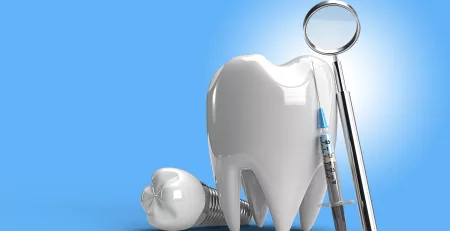Understanding Toothpaste Ingredients: What to Look for and what to Avoid.
Introduction
Understanding Toothpaste Ingredients at Toothpastes.co.uk
Toothpaste is one of the most essential products for maintaining oral hygiene and preventing dental problems. However, not all toothpastes are created equal. Some toothpastes contain ingredients that may have harmful effects on your health and the environment.
Some of these ingredients include:
Sodium lauryl sulfate (SLS):
This is a detergent that creates foam and helps to remove dirt and bacteria from the teeth. However, it can also cause irritation, dryness, or canker sores in some people.
Understanding Toothpaste Ingredients – Fluoride:
This is a mineral that strengthens the enamel and prevents cavities. However, it can also cause fluorosis (a condition that causes white spots or stains on teeth) in children under six years old, or thyroid problems, neurological disorders, or bone diseases in adults who consume too much of it.
Triclosan:
This is an antibacterial agent that helps to fight plaque and gingivitis. However, it can also disrupt hormone balance and increase the risk of breast cancer, as well as contribute to antibiotic resistance and environmental pollution.
Artificial colours, flavours, and sweeteners:
These are chemicals that give toothpaste a pleasant appearance, taste, and smell. However, they can also cause allergic reactions, hyperactivity, or cancer in some people.
If you want to avoid these chemicals and enjoy a natural and eco-friendly smile, you need to understand the ingredients of toothpaste and how to choose the best one for your needs. In this article, we will explain the main categories of toothpaste ingredients and what to look for and what to avoid when buying toothpaste.
The main categories of toothpaste ingredients
Toothpaste ingredients can be divided into four main categories: abrasives, detergents, active agents, and additives. Each category has a different function and effect on your teeth and gums.
Abrasives:
Abrasives are substances that help to scrub away stains and plaque from the teeth. They are usually made from silica, calcium carbonate, baking soda, or charcoal. Abrasives should be gentle enough to avoid damaging the tooth enamel or causing sensitivity. The abrasiveness of toothpaste is measured by the Relative Dentin Abrasivity (RDA) scale, which ranges from 0 to 250. The lower the RDA value, the less abrasive the toothpaste is.
Detergents:
Detergents are substances that help to create foam and disperse the ingredients in toothpaste. They also help to remove bacteria and food particles from the teeth. The most common detergent in toothpaste is sodium lauryl sulfate (SLS), which is a synthetic surfactant that can cause irritation, dryness, or canker sores in some people. Some toothpastes use alternative detergents that are derived from coconut oil, such as sodium cocoyl glutamate or sodium lauroyl sarcosinate.
Active agents:
Active agents are substances that provide specific benefits for your oral health, such as preventing cavities, reducing plaque formation, whitening teeth, freshening breath, or managing sensitivity. Some of the common active agents are fluoride, xylitol, zinc citrate, triclosan, hydrogen peroxide, potassium nitrate, or strontium chloride. Active agents work by either forming a protective layer over the teeth or interfering with the bacterial activity.
Additives:
Additives are substances that enhance the appearance, taste, smell, or texture of toothpaste. They include artificial colours, flavours, sweeteners, preservatives, thickeners, stabilizers, or humectants. Additives do not have any direct effect on your oral health but may have some side effects on your overall health or the environment.
What Toothpaste Ingredients to look for when buying toothpaste
When buying toothpaste, you need to consider several factors such as your oral health condition, your personal preference, and your environmental impact. Here are some tips on what to look for when buying toothpaste:
Look for natural and organic ingredients:
If you want to avoid synthetic chemicals and enjoy a natural and eco-friendly smile, you should look for toothpastes that contain natural and organic ingredients that are derived from plants, minerals, or animals. Some examples of natural and organic ingredients are coconut oil, baking soda, xylitol, green tea extract, or essential oils. You should also look for certifications from reputable organizations, such as USDA Organic, Ecocert, or COSMOS, which verify the quality and origin of the ingredients.
Look for fluoride-free options:
If you are concerned about the potential risks of fluoride exposure, such as fluorosis, thyroid problems, or neurological disorders, you should look for toothpastes that do not contain fluoride or use natural sources of fluoride, such as green tea extract or xylitol. However, you should also be aware that fluoride-free toothpastes may not provide enough protection against cavities, especially if you have a high risk of tooth decay due to factors such as dry mouth, braces, or frequent snacking habits. You should also consult your dentist about the best toothpaste for your oral health condition and follow their recommendations.
Look for low-abrasive options:
If you have sensitive teeth or enamel erosion, you should look for toothpastes that have a low RDA value and do not contain harsh abrasives that can damage your teeth or cause pain. Some examples of low-abrasive ingredients are silica, calcium carbonate, or bamboo powder. You should also look for toothpastes that contain anti-sensitivity agents that help to block the tubules in the dentin and reduce the nerve transmission, such as potassium nitrate or strontium chloride.
Look for other benefits:
Besides the basic functions of cleaning and protecting your teeth, some toothpastes may offer other benefits that suit your oral health needs and preferences. For example, if you have stained teeth due to smoking or drinking coffee, you may want to use a toothpaste that contains whitening agents that bleach the teeth and remove stains, such as hydrogen peroxide or carbamide peroxide. If you have plaque or gingivitis, you may want to use a toothpaste that contains anti-plaque or anti-gingivitis agents that reduce the formation of plaque and tartar and prevent gum inflammation, such as zinc citrate or triclosan. If you have bad breath, you may want to use a toothpaste that contains freshening agents that neutralize odours and refresh your breath, such as peppermint extract or xylitol.
What to avoid when buying toothpaste
When buying toothpaste, you also need to be aware of some ingredients that may have harmful effects on your health or the environment. Here are some tips on what to avoid when buying toothpaste:
Avoid sodium lauryl sulfate (SLS):
This is a detergent that creates foam and helps to remove dirt and bacteria from the teeth. However, it can also cause irritation, dryness, or canker sores in some people. Some studies have also suggested that SLS may increase the risk of oral cancer by damaging the mucous membranes in the mouth. You should avoid toothpastes that contain SLS or use alternative detergents that are derived from coconut oil, such as sodium cocoyl glutamate or sodium lauroyl sarcosinate.
Avoid triclosan:
This is an antibacterial agent that helps to fight plaque and gingivitis. However, it can also disrupt hormone balance and increase the risk of breast cancer, as well as contribute to antibiotic resistance and environmental pollution. Some studies have also suggested that triclosan may interfere with the effectiveness of fluoride by reducing its uptake by the teeth. You should avoid toothpastes that contain triclosan or use alternative anti-plaque or anti-gingivitis agents, such as zinc citrate or green tea extract.
Avoid artificial colours, flavours, and sweeteners:
These are chemicals that give toothpaste a pleasant appearance, taste, and smell. However, they can also cause allergic reactions, hyperactivity, or cancer in some people. Some artificial colours, such as FD&C Blue 1, FD&C Yellow 5, or FD&C Red 40, have been linked to behavioural problems in children. Some artificial flavours, such as saccharin, aspartame, or sucralose, have been linked to metabolic disorders, such as diabetes or obesity. Some artificial sweeteners, such as sorbitol or mannitol, have been linked to digestive problems, such as diarrhoea or bloating. You should avoid toothpastes that contain artificial colours, flavours, or sweeteners or use natural alternatives, such as xylitol, stevia, or essential oils.
Conclusion
Toothpaste is one of the most essential products for maintaining oral hygiene and preventing dental problems. However, not all toothpastes are created equal. Some toothpastes contain ingredients that may have harmful effects on your health and the environment. To choose the best toothpaste for your needs, you need to understand the ingredients of toothpaste and what to look for and what to avoid when buying toothpaste.
We hope this article has helped you understand how to choose the best toothpaste for your dental health. If you want to learn more about oral hygiene products or dental care tips, please visit our shop at Toothpastes.co.uk








Leave a Reply